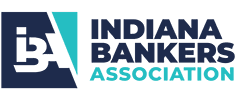
We provide support to confirm that your garnishment practices aren't heightening financial, regulatory, or reputational risk for your bank.
No one wants to face the financial penalties, reputational harm, or other consequences of mishandling garnishments.
But staying on top of the regulations is demanding. Laws vary by jurisdiction and can change, you must manage each garnishment order accurately and on time, and you have to accommodate the rights of creditors and your customers.
But sometimes, you're short on staff, expertise, and time for such an intense and complicated task.
That's why it's a smart move to partner with TCA Compliance.
We devote our expertise and time to reviewing your garnishment policies and practices in detail.
In addition to advising you on what to do to pass your next exam, we recommend ways to make your daily process more efficient, effective, and less painful.
During our reviews, we follow the procedures that your bank examiner will follow.
That includes assessing your approach to handling new garnishment orders, identifying your approach's risks, and recommending other, better options.
Also, reviewing your technology can reveal whether your current software is helping or hindering you in managing your garnishment responsibilities.
In addition, we evaluate whether you're making the correct calculations, withholding the proper amounts, and if you're dispersing the money to the right creditors on time.
How you protect customers’ privacy and data, whether you’re treating them fairly, and if your long-term record-keeping is sufficient to satisfy regulators are also part of our work.
In appraising your garnishment procedures, TCA's A Better Way helps you reduce your risk exposure.
Key deliverables include:
- Evaluating your policies and procedures for managing garnishment orders.
- Ensuring that you respect customers' rights.
- Sharing the latest regulatory changes at the federal and state level that affect your bank.
- Offering advice on streamlining your garnishment approach.
Additional Compliance Topics
2019 Regulation E Claim Calendar
These days, losses from Regulation E error claims are accepted by many institutions as the cost of doing business. Many institutions are relying more heavily upon internal and/or third-party fraud detection and prevention resources. But as you know, managing risk of loss is just part of the story. Regulation E compliance and financial risk continues […]
Cybersecurity: A Quick Overview in 5 Easy Steps
Part 1 of a 6-Part Series Network security, once thought of as an IT issue, is now Cybersecurity. A name change was necessary to keep up with the times, but no matter what it is called, is it still just an IT issue? We don’t think so. A shift in thinking and a different perspective […]
Government Shutdown Financial Assistance
The government shutdown has ended for now, which is a relief to thousands of government workers. However, with another shutdown looming, many banks have asked in this period of uncertainty: How can we help affected individuals? Since we cannot predict the future, we thought the following would provide some ideas. The regulatory agencies have provided […]
Amid Data Reporting Uncertainty, HMDA Risk Must Be Managed: Part 1—How is it Going?
Now that more than half the year is gone, many banks are starting to look more closely at their new 2018 HMDA LAR requirements because they have adequate volume to do testing. TCA wants to share with you what we have found in doing preliminary HMDA LAR validations. Many of the issues we’ve seen are […]
The Expectation of Exceptions in the World of Fair Lending
Exception reporting is not new; all banks are required to report loan policy and loan documentation exceptions for Safety and Soundness. However, a new unwritten rule is fair lending exception tracking covering pricing and underwriting exceptions on consumer loan products. Whether it’s HMDA for banks with less than or more than 500 entries, regulators want […]
HMDA Reporting Requirements: Business Purpose Loans
The passing of Senate Bill 2155 adds another level of complexity to an already complex Regulation. The Bill exempts institutions that originate fewer than 500 closed‐end loans or open‐end lines of credit in each of the two preceding calendar years from reporting certain HMDA data points. This “relief” spurred the question, “What and how do […]











